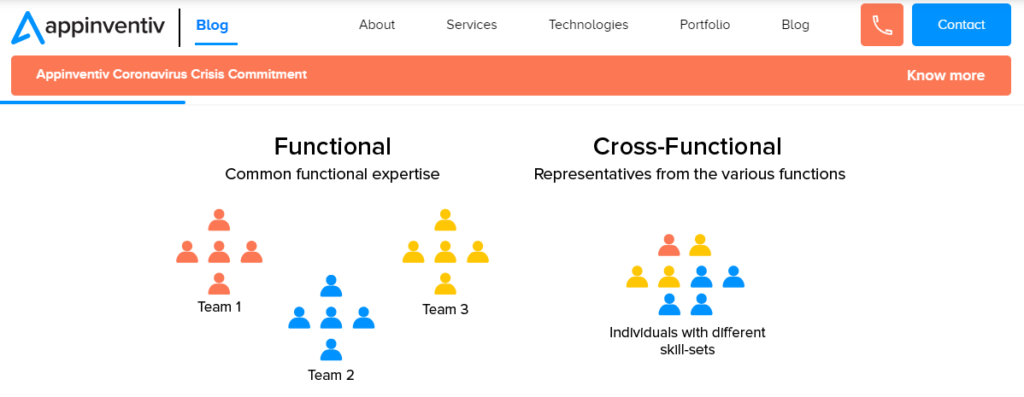What Is Sales Enablement And Why You Should Do It

Table of Contents
Sales are an important factor in any business. It's what keeps the business up and running and provides sustainability for growth. But there comes a point that sales decline or hit a wall and plateaus.
When sales plateau, marketing strategies can only do so much. A process that can help increase sales but overlooked by many is called sales enablement - an iterative process that makes your sales team much more effective.
I'm sure you've heard of it but if you haven't, this article is a good starting point to learn about all things sales enablement. But before we talk about its process, let’s discuss what it is first.
What is Sales Enablement?
Any person who is determined to make extra money is willing to spend extra hours at work and put in more effort in improving him or herself.
The same goes for businesses. If a business wants to earn more and grow, the people behind it need to think of ways on how they can improve at their jobs.
That’s why some big companies let their staff take digital marketing courses, sales training, or even make them take foreign language courses to tap into a new set of demographics. That’s how dedicated they are to improving their employees.
While those courses might cost a few dollars, a cheap process available for every company is often overlooked. It’s a process that improves a sales team’s performance and is called sales enablement.
Sales enablement is the strategic and iterative process of providing your sales team all the resources they need to close deals and make a sale.
This process can include training your sales team, providing them content, and guiding them on how to build relationships with clients.
Sales enablement in a nutshell is giving everything that your sales team needs to be more effective in closing and converting prospects.
Why Is Sales Enablement Important?
The best athletes in the world wouldn’t reach their status by themselves, they are always backed by a supportive team and organization. And if a business wants to grow and thrive, it should treat its sales team like top-tier athletes. They should be behind their backs supporting and providing everything.
Sales representatives are responsible for bringing more money and clients to the business. They are on the front lines looking out for business opportunities and talking with prospects with the hope of turning them into paying customers.
Given the importance of a sales team, sales enablement should be used to improve this vital team in the business. Since at the end of the day, they are the ones responsible for bringing in more money to the business.
Seeing the importance of sales enablement to a sales team, who should start this process?
Who Should Conduct Sales Enablement?
For some businesses, it’s the whole sales team alone. To others, it should be the marketing team. But I believe that it should be both groups. Sales and Marketing should work hand in hand when it comes to sales enablement.
The marketing team will act as the mastermind behind this grand scheme of increasing sales. So on top of their SEO strategies, they will also provide the best and up-to-date resources on how the sales team can sell and convert more.
These resources can come in the form of videos, blogs, researches, and the latest studies.
The resources used shouldn’t be limited to outside data, the marketing team should also look into the sales analytics of their very own business to find where the sales reps can improve.
The sales team on the other hand is the one implementing the strategies taught by the other team. They’ll test those pieces of information as they face their clients.
To help the marketing team, the sales team can also let them know what they need - what content is missing, what resources they lack, and what they would like to learn more on.
These inputs by the sales representatives are important since they are the ones on the field. They are the ones who are facing the customers daily.
Having this back and forth communication from both teams creates a loop of improvement. When two teams work together towards one goal, the chances of succeeding are high.
8 Tips To Make Your Sales Enablement A Success
1. Build a team where everyone is efficient
The process of sales enablement shouldn’t be done by only one person in the company - it should be a team effort.
As mentioned earlier, the marketing and sales team should cooperate to make this work.
Every person in a sales enablement team should have specific tasks. To some, their team involves:
- Leaders of their sales team
- Marketers who will be researching and creating the resources needed
- Marketers that will train and relay the information to the sales team
By having these tasks delegated to each member, it will be easier to time-manage this with other responsibilities at work.
The team should only consist of key members. Teams that have too many people will just result in miscommunication - making the team and the whole process inefficient.
2. Define your why
Before going on to providing resources and implementing them, both the marketing and sales team should be on the same page as to why there’s a need for sales enablement.
Both teams should recognize that there’s a gap between the sales goal and actual sales.
Identifying the problems and knowing how to fill that gap is the key to achieving the desired number of sales. With the expertise of both teams, coming up with solutions wouldn’t take long.
3. Establish goals and KPIs

KPIs aren’t just used for marketing efforts, it can also be used to see improvements in sales
numbers. As soon as you assemble your team and define why you started a sales enablement process, it’s also important to establish goals and KPIs in the earlier stage.
Clearly defining goals and KPIs makes every member have one goal. This makes everyone on the team move towards the same goals and initiative.
Common KPIs would be:
- Average time to close a sale
- Number of sales activities
- Time spent on actively selling
- Upsell success rates
- Number of closed deals
- Content Usage
- Lead conversion rate
- Quota reached
By knowing these metrics, members of the team will know what to work hard for. This will also determine if the sales enablement is a success.
If the team sees an increased number in those metrics month after month, then the sales enablement is working. If the numbers remain stagnant or at worst declining, then the team should reassess how they can improve the outcome.
4. Identify the sales team’s challenges and the pain points of consumers
The marketing team should talk with their sales representatives and ask them about the challenges that they’re facing. By identifying the problem, both teams can get to work and think about the solutions.
Although each sales team from different businesses might vary, the common challenges they face would be:
- Finding qualified leads
- Asking the right questions
- Getting a response from the prospect
- Establishing trust
Finding solutions to address these issues will help the marketing team to have a starting point to know what resources to give.
The pain points of every customer may vary for each industry that the business is in. This just means that there’s no one-size-fits-all when addressing this.
Examples of pain points could be:
- A lot of people worry about their privacy being hacked when surfing the internet, a business in the cybersecurity industry can introduce them to a VPN.
- Business owners of restaurants know how hard it is to keep a tab of everything in the business, so iNecta offers their food ERP software to help them with their inventory and other processes.
Every customer will always have a pain point, it’s up to your sales team to show how they can solve it. Remember that people go to your business because your products or services can potentially solve their problems.
5. Research and analyze data

There’s a reason why a sales enablement is implemented in the first place - numbers are declining, targets aren’t hit, and sales are stale.
Since it’s the marketing team’s job to study and analyze data, the current numbers that the sales team has produced can be a starting point.
The members who are tasked to do this job should look into the numbers and how they can improve them. They should look into it and find what’s missing, what training is needed, and what things should be continued.
Other than looking at current data, the team should also be forward-thinking. Customer behavior is always changing - what worked before might not work today.
An example of this can be the time when consumers believed everything a business had to say. And that was enough to convince them to buy from the business.
But now, given the information available on the internet, consumers put more weight on their buying decisions in reviews and what other people have to say about the business or a specific product.
The team could be forward-thinking by looking at recent studies, reading research, and staying on top of how their customers act in their niche.
6. Relay the information. Educate and train the sales team.

Once the marketing team gathers all the information to help and improve the sales team, it’s time for them to relay the information.
This information can be the things that the sales team needs to engage and land more clients. These can come in the form of fresh content, sales script, research studies, a new protocol, or sales tools.
So, how can marketing teams relay this information?
They can do so by a series of presentations, holding training days, training sessions, or a team online event. Although this is an added agenda to everyone’s busy schedule, properly relaying this information is a must.
The training runs for several days or in sessions because every resource should be taught or presented clearly.
Especially when the marketing team presents a new tool like a predictive dialer or a marketing automation software. Some of these applications aren’t easy to use and need a bit of familiarity to navigate them correctly.
Plus the sales team should really understand that these tools are there to make their jobs easier. If the sales team doesn’t recognize it as such, they simply won’t use it. They would stick to their traditional ways - something that they are more familiar with.
Other than training on using new softwares, training programs can include:
- Sales training
- Market training
- Product training
- Project management training
It’s also important to note that training programs shouldn’t be a one-time thing. The lessons here should be reinforced by holding programs at least twice or thrice a year. By doing so, sales teams are reminded of what they have to do and change.
7. Implementation is a must
All of the steps above are mostly made possible by the marketing team. It’s now time for the sales team to implement everything they’ve learned.
All the new sales scripts would be put to test. All of the softwares will be utilized. The new contents and strategies would be used.
This is where the marketing team sees their efforts in action - they’ll see whether it’s effective and can improve the numbers by the end of the month.
8. Feedback and analysis of results

As mentioned earlier, sales enablement is an iterative process. This means that the process is improved or made better every time it is repeated. It’s also a process that’s used again until the desired goal is achieved.
That’s why feedback and analysis of results are important. It makes both teams see what’s working and what’s not. It gives them an insight into what actions should be continued and what needs improvement.
This is the constant loop of sales enablement. It’s an ongoing process that’s improved and made better every time.
Why You Should Do Sales Enablement
There are a lot of ways to increase conversion and sales. But what’s great about sales enablement is the effects of it don’t focus on the business’s bottom line alone.
The positive effect of sales enablement goes beyond increased sales, it also improves how your customer perceives your business.
To convince you more on why you should do it, below are four more benefits:
Better cross-functional teams

Cross-functional teams are groups consisting of people from different areas of the company. In the case of sales enablement, the sales and marketing team is working together to achieve the same goal.
Although this is much easier said than done, it’s one of the good things to see when you’re a business owner. You’d always like to see your people working hand in hand in achieving something that can grow your business. A team that works together can overcome any challenge that stays in their way.
A smarter and better sales team
Since the sales team is now more equipped with insights about the customers, the products, and the market in general, they can approach clients more smartly.
They’ll know what are the common challenges that clients are facing. They now have the information on how to address that naturally without being too pushy about selling the product.
They are now also equipped with the knowledge of how to treat customers better. Just having training on this alone can increase customer retention and improve customer experience.
Happier clients
Since the sales team knows how to properly approach clients, customers will now have a much better experience with your business.
A happy customer tends to be a repeat customer. Plus, if your service is exceptional, your clients will spread the good word about your business for you.
Business Growth
If you value your online business, sales will be an important factor for that. But if you’re not planning to sell your business, sales enablement can still affect it tremendously.
The more equipped your sales team is, the higher the chance that they can land or convert a sale. More sales mean more money to sustain the growth and sustainability of a business.
Conclusion
By reading the process and the benefits of sales enablement, you now know that it can benefit any business. No matter what industry you’re in, whether you’re a niche digital marketing agency, a brick-and-mortar store, or an online business, sales enablement is good for your business.
Although the process of sales enablement might look easy on paper, it’s a tedious but still fun job to do.
Sales enablement shouldn’t be a stressful process. It can be a fun and great learning experience for everyone involved.
Share this article



